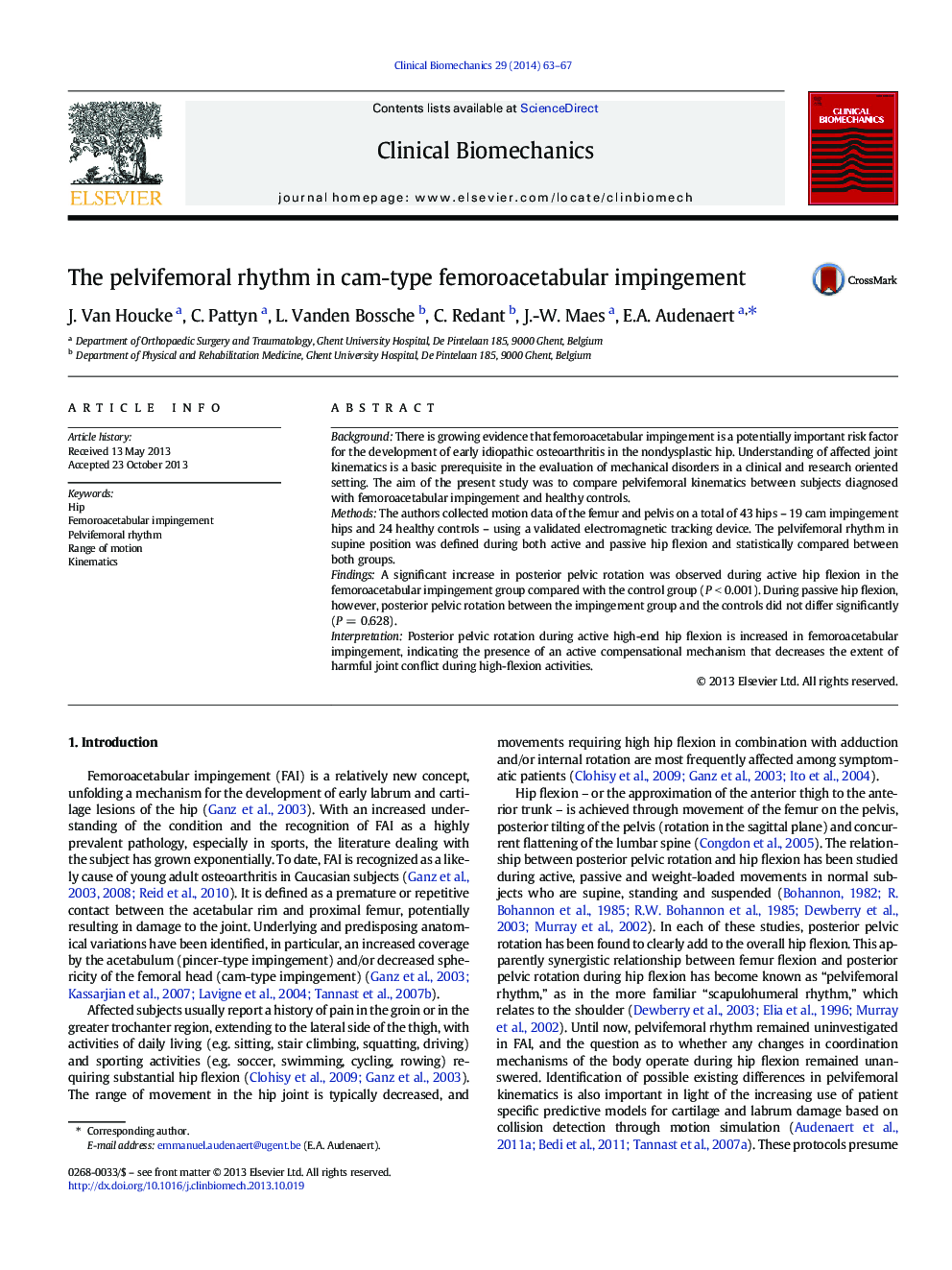| Article ID | Journal | Published Year | Pages | File Type |
|---|---|---|---|---|
| 4050414 | Clinical Biomechanics | 2014 | 5 Pages |
BackgroundThere is growing evidence that femoroacetabular impingement is a potentially important risk factor for the development of early idiopathic osteoarthritis in the nondysplastic hip. Understanding of affected joint kinematics is a basic prerequisite in the evaluation of mechanical disorders in a clinical and research oriented setting. The aim of the present study was to compare pelvifemoral kinematics between subjects diagnosed with femoroacetabular impingement and healthy controls.MethodsThe authors collected motion data of the femur and pelvis on a total of 43 hips – 19 cam impingement hips and 24 healthy controls – using a validated electromagnetic tracking device. The pelvifemoral rhythm in supine position was defined during both active and passive hip flexion and statistically compared between both groups.FindingsA significant increase in posterior pelvic rotation was observed during active hip flexion in the femoroacetabular impingement group compared with the control group (P < 0.001). During passive hip flexion, however, posterior pelvic rotation between the impingement group and the controls did not differ significantly (P = 0.628).InterpretationPosterior pelvic rotation during active high-end hip flexion is increased in femoroacetabular impingement, indicating the presence of an active compensational mechanism that decreases the extent of harmful joint conflict during high-flexion activities.
